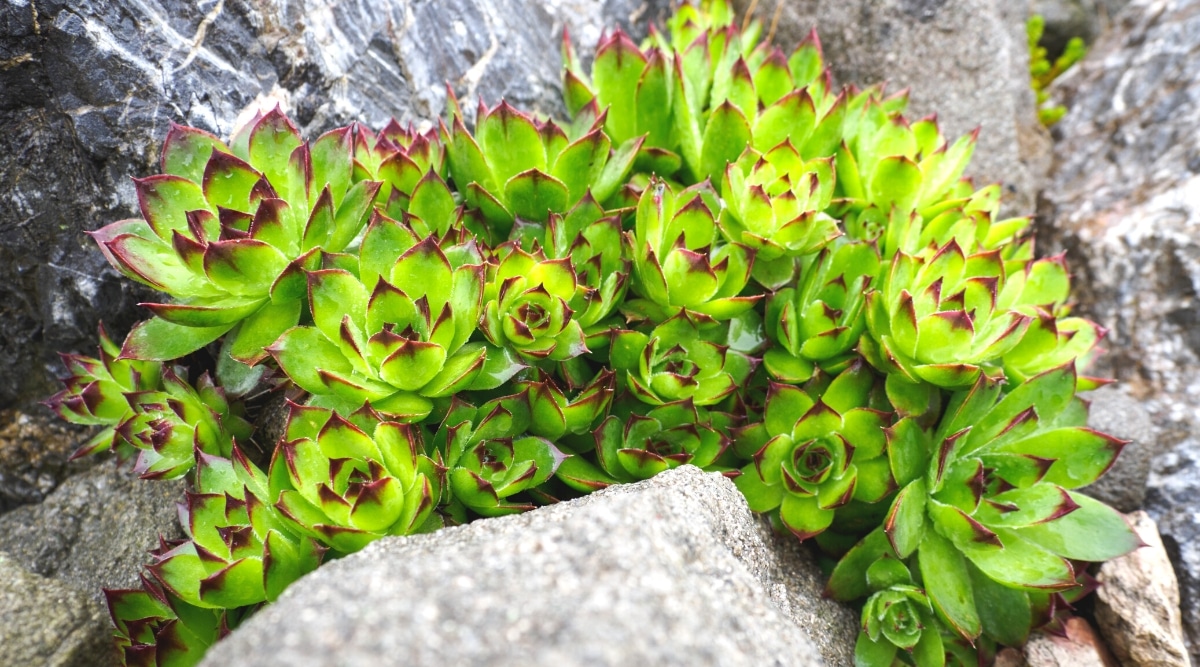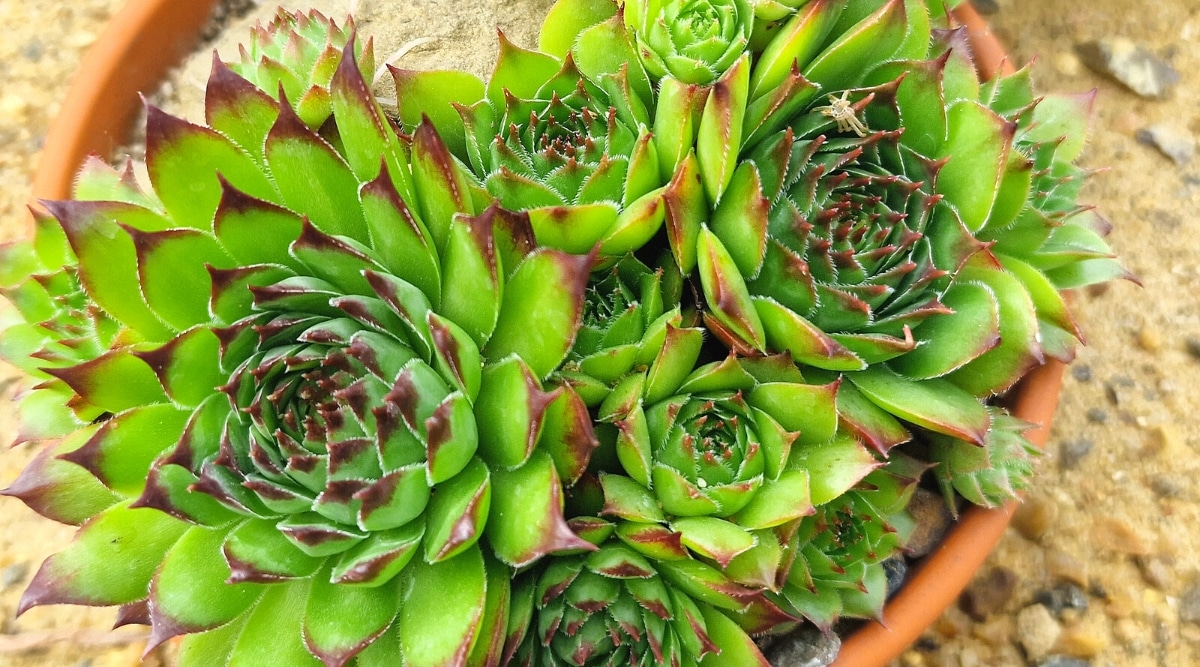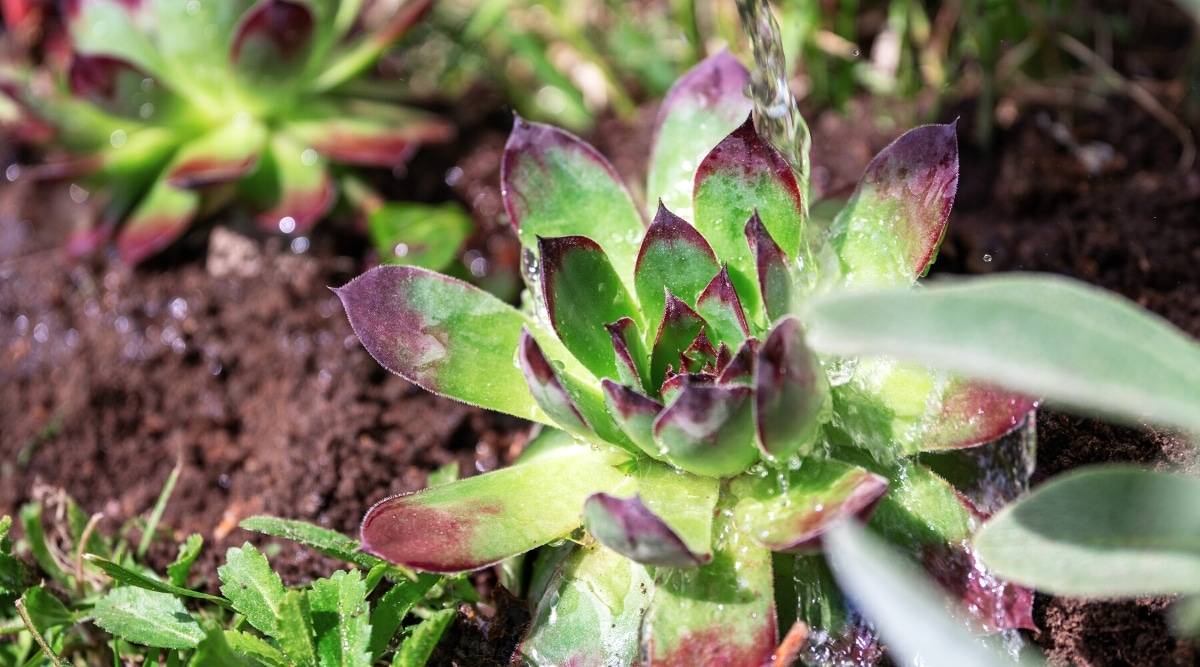Cacti & Succulents
Trying to fancy out the good sun orientation course for your hens and chick succulents ? Picking the complete sunshine exposure for your works can ensure that it prosper to it ’s full potential . In this article , gardening expert Paige Foley shares her top backsheesh for picking the perfect sun - fill location for your Hens and Chicks flora .
Contents

Hens and chicks are precious garden succulent that will farm in the most difficult areas of your yard . Not only can they be grown outdoors , but they can also be grown indoors as a houseplant . They are an excellent succulent for beginners because they are pretty hardy and survive despite neglect .
hen and chickshave very scummy tearing requirements and grow well in gravelly or sandy grime . If you spring up them indoors , choose apotting mix optimized for succulents and cacti . you may even contribute a bit of gravel or grit to your indoor hen and chicks ’ stain . sum up coarse materials increases airflow , which is important for the proper growing of hen and doll .
But perhaps more important than the soil make-up is the lightheaded requirement that your plants have . uprise plant indoors can be sly if you do n’t have the right amount of sunlight . So how much twinkle should your hens and skirt be getting ? Let ’s examinehow much sun your hen and chicks will needto be glad and healthy !

The Short Answer
Hens and chicks love the sun and should be imbed in areas that receiveat least 6 60 minutes of sunlightper day . If you may implant in 8 hours or more your hens and chicks will give thanks you . Providing the right light will yield numerous rosette and vibrant coloring .
Depending on the variety you grow , hens and chick can handle more subtlety over others . Larger varieties require more sunlight while smaller varieties take less hen and chick prefer temperature between 65 to 75 ° F . Providing some good afternoon tone can avail prevent sunburned hens and chicks .
When growing indoors , if you do n’t have enough sunlight exposure , you may want to regard a maturate light to append the sunlight .

The Long Answer
Hens and biddy are alpine succulents aboriginal to the mountains of Europe and northerly Africa . They can arise in some pretty extreme conditions . When planting hen and chicks , keep this in psyche and seek to mimic mountainous growing conditions . They may not be picky about soil and water , but they arepicky about sun .
Pay attention to signs that your hens and chicks are n’t receiving too slight or too much sunlight . Catching these signs early will help keep open your hens and chicks . Ensuring your hens and chick receive enough sunlight will help produce more offsets or chicks and increase the vibrancy of the foliage color .
Sunlight Requirements
Hens and chick need at least 6 hr of sunlight day by day to be healthy and multiply . A locating that receives8 hr or more of sunlight dailyis well . The amount of sunlight your succulent require will depend on the sort you prefer to grow , but for hen and wench , as a universal convention , 8 hours is usually ideal .
A good rule of pollex is that if you have a big kind of hens and chicks , they will need more sunlight . On averagelarger varietiesshould receive 10 to 12 hours of direct sunlight . Smaller varieties can get away with less sun per day . These variety will need anywhere from 6 to 8 hours of direct sun day by day .
Once you have identify a location and planted your hens and dame , checker on them often . You will want to observe your hens and chicks for anysigns of distress . Catching problems ahead of time is the key to economize your biddy and chicks . Let ’s look at problems that might take place with too much or too little sunlight .

hen and chicks thrive in temperatures between 65 to 75 ° fluorine but can also tolerate higher and depleted temperatures . The plants will let you sleep with if they receive too much sun . Sunburn is a common trouble with hens and chicks .
If your hen and dame are expose to intensely red-hot solar ray , they may develop irreversiblesunscald on the leave . These will appear as discolored spots on the leaves . Patches can be lily-white , brown , or glum red during the early microscope stage of sunscald .
life-threatening sunscald will show up asblack patcheson the edge of the leave-taking and will spread to the center . finally , the sunscald will exhaust the hen and chicks , and the leaves will devolve off the industrial plant . It may die if this is n’t caught quickly .

There are way to protect your hens and chicks from burn . The easiest thing to do is to move the succulent to a shadier area or one that invite afternoon shade , as the afternoon sun is often more intense .
If you are ineffective to move your hens and chicks , plant taller plant around the hens and biddy to give them some specter . you’re able to also cling a shade cloth over the hens and chicks for part of the day . Avoid constant full subtlety weather condition , of row , because those number with their own issue !
hen and bird must be expose to at least 6 hour of sunlight day by day to be happy , and 8 hour is better . Even though they are hardy succulents that do n’t complain much , they will let you know when something is wrong .

If the plant is grown in too slight light , the flora will becometired and extend out . hen chicks should be sozzled colony of rosettes .
Too little sunlightwill cause etiolation , a cognitive process in which the plant ’s foliage stretches out in search of light . Etiolation is n’t just an aesthetic emergence , although it does n’t see great ; if it is n’t addressed , the succulent may break down due to deficiency of sun .
Indoor Lighting
Choosing the right localisation in your mansion to have happy and hefty hen and chicks might take some trial and wrongdoing . Finding the correct fix might require go the plant around until it displays full and vibrant leaves . Typically window sills , shelf , and the top of cabinets are corking location for hens and chick .
Hens and chicks need the same amount of sunlight whether they are develop indoors or out of doors . For those of us in the northern hemisphere , to the south - facing windowsare a great option and provide enough light for hens and chick , even during the wintertime calendar month . Placing the east and west windows may not provide them enough sunshine .
hen and chick planted in wrong indoor Inner Light can become etiolate , as mentioned above . Pay attention to your succulent for sign of too little light . They will stretch and become irregular and visually unappealing . If you start visualize etiolation despite your best efforts to provide natural lighting , consider summate a grow Inner Light so they are n’t emphasise by looking for illumination .

Outdoor Sunlight
Hens and chicks will develop just about anywhere . They look dandy in John Rock landscapes , bulwark crevice , and clay pots . No matter where you adjudicate to plant them , you need to be certain they are get the right amount of sunlight .
Just like plant indoors , you may have to move them around till you find the right location . The sunlight outdoors is more intense than the light indoors . The afternoon sun can be extremely powerful and may cause damage to hens and chicks .
If you will bring home the bacon any shade for your hens and doll , it ’s honorable to provide it in the afternoon . Your hens and chicks will tell you if thesunlight is too intenseor not intense enough . The leaves will begin to sunburn , and the plants ’ leaves may wilt .

When temperature drop and the light from the Dominicus becomes less intense in the drop , biddy and chicks will go inactive . During dormancy , your hens and dame do n’t need much sunlight . They are still pop off through photosynthesis but at a much slower rate .
Do n’t cover them completely during the winter , as they need a very small amount of sun to last dormancy . In colder climates , this is the time of year that they should be brought indoors to overwinter , but their quiescency will aid you here !
Coloring
hen and dame develop interesting patterns of color , with the tips of their leaves rank from red to orange to bluish to purple . The intensity of the colour will alter depending on how much sun they receive and the temperature outdoors . To check the bright color for your hens and dame ’ foliage , give them tolerable lighting .
If you implant your hens and chicks and they appearpale and feeble , this is a right denotation they need more sunlight . Move them to a good location and determine to see if they retrieve their semblance . recuperation may take some time , so be patient .
Other Care Tips
Although sunlight is significant for the right growth of biddy and wench , it ’s not the only constituent that keeps them healthy . On top of sunshine , hens and doll needproper tearing and soil conditions . hen and skirt might have high indigence when it add up to sunshine , but right lachrymation and well - draining soil are necessary for their survival , too .
hen and dame are drought - tolerant perennial . Once full mature , they have a inscrutable base organisation that can pink into moisture below the soil surface . If it ’s in the ground , a dull , deep soakage of the flora ’s soil is respectable than a riotous saturation ; this ensures the soil can absorb and take the moisture for your plants . Container - grown plants should receive steady drip mold irrigation , although a container will need less body of water per session .
hen and skirt are known for growing in piteous soils that most plant refuse to grow . Their ideal soil type issandy , gravelly soilthat ’s well - draining . These succulents are n’t big fans of soggy soil , so it ’s best to begin with the right filth from the beginning !
Final Thoughts
Hens and biddy will honor you with their vivacious colors and make multiple offshoots if placed in proper lighting . The variety you choose to grow will determine its easy requirement , but the best rule of thumb isat least 8 hours of sunlightdaily . Watch for signs that these succulents need more sunlight , like pale colouring or etiolation , and address those issues quickly .